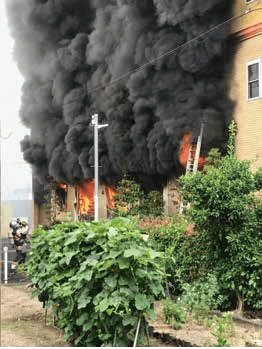Issue:
Making sense of the senseless
By Gavin Blair
On the morning of Thurs., July 18, two things happened in Japan.
A man reported to have been receiving treatment for mental health issues walked into the main studio of Kyoto Animation, ignited 40 liters of gasoline and perpetrated the worst confirmed mass killing in Japan in the postwar era. And the National Police Agency (NPA) released a crime statistics report for the first six months of 2019, showing the overall number of offences had fallen 8.7 percent and were on course to hit another postwar low for the full year.
Making sense of this juxtaposition is no easy task for those reading about or reporting on cases of multiple murders. The contradiction of an increasingly more peaceful world and outbursts of senseless acts of horrific violence can feel like a circle that is too round to square.
Conversations and online comments about such crimes are frequently peppered with phrases along the lines of “The world is becoming an increasingly dangerous place,” “What is wrong with people these days?” or “When I was young…”

All of this is in defiance of the reality of crime and violence. But human beings are emotional and intuitive creatures, even though our intuitions are often hideously wrong. Despite the falling crime rate in Japan, many of its citizens are convinced of the opposite and more fearful than ever of becoming a victim, something the NPA has acknowledged and is trying to address.
Japan’s murder rate was 0.2 per 100,000 people in 2018, joint lowest with Singapore, according to the United Nations Office on Drugs and Crime. In recent years there have been between 600 and 700 murders annually, though there was a slight spike in the first half of this year. This means the Kyoto arson attack, from which 34 have died at the time of writing, will likely raise this year’s rate by around 5 percent. Those figures compare to around 1,500 annually in the 1980s and 3,500 in the 1960s, the latter in the golden days of the Showa era that many look back nostalgically on as a time when front doors could be left unlocked.
Keeping the big picture in mind can become more difficult with proximity to events. In late May, I was covering for a UK newspaper for another Club member when I received a call early in the morning about a stabbing attack in Kawasaki. I turned on the TV to see it had occurred near Noborito Station, two stops from where I live and the place I change trains on the way into Tokyo. A 12 year old girl and the father of another student were killed along with the assailant, who stabbed himself in the neck before police arrived and 18 young girls were injured.
The next day, it emerged that the killer lived near my station, where he had boarded the train the previous morning carrying a rucksack full of knives. It could happen anywhere, it is just a coin- cidence. Crime is very rare in Japan and getting rarer; logically I know this. My thoughts went back to the mass stabbing at a care home in July 2016 in Sagamihara, the city I lived and worked in when I first arrived in Japan. 19 people were killed and 26 injured, but it had less of an personal impact due to the simple but illogical reason that I was on holiday in the UK at the time. The evening of the Kawasaki incident I did a radio report and was asked about the shock of this happening in “safe” Japan. I refer-enced the Sagamihara stabbings and said violence isn’t com- pletely unknown.
When news of the horrors in Kyoto breaks I am covering for a different UK paper. It is also a huge story for my regular string at the Hollywood Reporter. In a radio hit for another network that evening I’m asked the same “safe Japan” question and talk about the Sagamihara and Kawasaki stabbings.
Meanwhile, there are baseless rumors spreading on domestic social media that the arsonist is Korean Japanese, because he just must be. Bigotry and emotions have gone haywire.
In Kyoto the next day, the local deputy police chief tells me they had no murders in his district last year, but a woman fatally stabbed a man in March in what seemed to be a domestic dispute.
Near the scene of the arson, I talk to a high school student who says he was walking past the studio seven or eight minutes after the fire started and he shares a photo he took at the time (above). He saw three badly burned people outside and says he couldn’t bear to look for long. I wonder if he feels his neighborhood is safe.
In a taxi to Kyoto Station on Saturday, conversation with the driver inevitably turns to the arson. The driver talks of the sense of community and unlocked front doors of his youth and the problems of today’s young. I point out that the young Japanese I know are very gentle, most have never had a fight, and crime is falling. He grudgingly agrees, but insists youngsters do things he would never have dreamed of. I think of pointing out the contradiction and quoting some statistics. But we’re pulling up at the station and I understand how he feels.
Gavin Blair writes for publications in Asia, Europe and the US.

